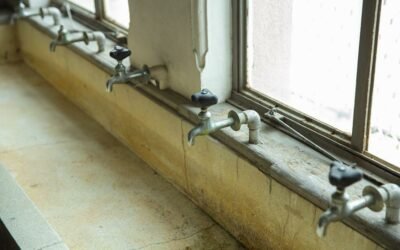Are you struggling with green mold on your mycelium? Don't worry, we've got you covered.
In this article, we will guide you through the process of identifying and eliminating green mold from your mycelium.
By following our prevention and sanitation techniques, along with natural remedies and chemical treatments, you'll be able to salvage your affected mycelium and prevent future outbreaks.
Get ready to say goodbye to that pesky green mold and ensure the health of your mycelium.
Key Takeaways
- Green mold on mycelium can be identified by the presence of green discoloration and a fuzzy or powdery texture.
- Prevention and sanitation techniques such as maintaining proper humidity levels, ensuring good air circulation, practicing good hygiene, monitoring temperature, and using proper substrate sterilization techniques can help prevent green mold growth.
- Natural remedies for green mold removal include using hydrogen peroxide, cinnamon powder, vinegar, baking soda, and tea tree oil due to their antifungal and antimicrobial properties.
- Chemical treatments such as hydrogen peroxide, bleach, white vinegar, commercially available fungicides, and isopropyl alcohol can be used to eradicate green mold on mycelium.
Identifying Green Mold on Mycelium
To identify green mold on your mycelium, carefully observe the presence of a significant amount of green discoloration. Green mold, also known as Trichoderma, is a common fungal contaminant that can negatively impact the growth and health of your mycelium. It appears as a greenish fuzz or powdery substance on the surface of the mycelium or in the substrate. The green coloration is caused by the spores and mycelium of the Trichoderma fungus.
When examining your mycelium for green mold, it's important to note that not all green discoloration indicates the presence of Trichoderma. Some strains of mycelium naturally produce green pigments, which can be mistaken for mold. To differentiate between Trichoderma and natural green pigments, look for signs of fuzzy or powdery growth and a distinct moldy odor. Additionally, Trichoderma typically spreads rapidly, covering large areas of the mycelium, whereas natural green pigments tend to be more localized.
If you suspect the presence of green mold on your mycelium, it's crucial to take immediate action to prevent its spread. Remove any contaminated substrate or affected mycelium and dispose of it properly. Sterilize the growing environment to eliminate any remaining spores. Implementing proper hygiene practices, such as using sterilized tools and maintaining a clean workspace, can help prevent future contamination by green mold.
Prevention and Sanitation Techniques
To prevent the growth of green mold on your mycelium and maintain a clean and healthy environment, there are several effective prevention and sanitation techniques you can implement.
Here are five techniques you can use to prevent green mold growth on your mycelium:
- Maintain proper humidity levels: Green mold thrives in high humidity environments. Keep the humidity levels between 70-80% to discourage mold growth.
- Ensure proper air circulation: Good air circulation helps prevent the buildup of moisture, which can promote mold growth. Use fans or ventilation systems to keep the air moving.
- Practice good hygiene: Regularly clean and sanitize your equipment, tools, and growing area to minimize the risk of mold contamination. Use a disinfectant solution to clean surfaces thoroughly.
- Monitor temperature: Green mold prefers temperatures between 65-75°F. Keep the temperature within this range to discourage mold growth.
- Use proper substrate sterilization techniques: Before inoculating your substrate with mycelium, make sure to sterilize it properly. This helps kill any existing mold spores and prevents contamination.
Implementing these prevention and sanitation techniques will help ensure a healthy mycelium growth environment free from green mold.
Regular monitoring and maintenance are key to preventing mold growth and preserving the health of your mycelium.
Natural Remedies for Green Mold Removal
One effective way to remove green mold from your mycelium is by using natural remedies. Green mold, also known as Trichoderma, is a common fungal contamination that can affect the growth and health of your mycelium. When dealing with this issue, it's important to use methods that are safe and environmentally friendly. Natural remedies can help eliminate green mold without causing harm to your mycelium or the surrounding environment.
One natural remedy for green mold removal is the use of hydrogen peroxide. Hydrogen peroxide is a powerful antifungal agent that can effectively kill mold spores. To use this remedy, mix one part hydrogen peroxide with ten parts water and spray it onto the affected area. Allow the solution to sit for a few minutes before wiping it away with a clean cloth.
Another natural remedy is the application of cinnamon powder. Cinnamon has antifungal properties that can inhibit the growth of green mold. Simply sprinkle cinnamon powder onto the affected area and let it sit for a few hours. Then, use a clean cloth to wipe away the powder and any remaining mold.
In addition to hydrogen peroxide and cinnamon powder, other natural remedies for green mold removal include vinegar, baking soda, and tea tree oil. These substances have antimicrobial properties that can effectively kill mold spores and prevent further growth. However, it's important to follow instructions and use these remedies in a well-ventilated area to avoid any potential health risks.
Chemical Treatments for Green Mold Eradication
You can effectively eradicate green mold on your mycelium by using chemical treatments. Here are some chemical treatments that can help you get rid of green mold:
- Hydrogen peroxide: Dilute hydrogen peroxide with water and spray it on the affected areas of your mycelium. Allow it to sit for a few minutes before rinsing it off. Hydrogen peroxide is effective in killing green mold spores and preventing further growth.
- Bleach: Mix bleach with water and apply it to the affected areas using a spray bottle or sponge. Let it sit for a while before rinsing it off. Bleach is a powerful disinfectant that can kill green mold and prevent its recurrence.
- Vinegar: Spray undiluted white vinegar directly on the green mold and let it sit for a few hours. Vinegar has antimicrobial properties that can help eliminate green mold.
- Fungicides: Use commercially available fungicides specifically formulated to treat mold. Follow the instructions on the label for proper application and safety precautions.
- Isopropyl alcohol: Apply isopropyl alcohol to a cloth or sponge and gently wipe the affected areas. Isopropyl alcohol can kill green mold and help in its removal.
Remember to wear protective gear, such as gloves and a face mask, when using chemical treatments. It's also recommended to test the treatment on a small, inconspicuous area of the mycelium before applying it to the entire affected area.
Steps to Salvage Affected Mycelium and Prevent Future Outbreaks
To salvage affected mycelium and prevent future outbreaks, take immediate action to remove any contaminated materials. Green mold can quickly spread and cause extensive damage if not addressed promptly. Follow these steps to salvage your mycelium and prevent future outbreaks:
- Identify and remove contaminated materials: Inspect all surfaces, substrates, and tools for signs of green mold. Dispose of any contaminated materials in sealed bags to prevent further spread.
- Sanitize the growing environment: Thoroughly clean and disinfect the growing area using a mold-specific cleaner or a mixture of bleach and water (1:10 ratio). Pay close attention to all surfaces, including walls, floors, and equipment.
- Improve ventilation and airflow: Green mold thrives in damp and stagnant conditions. Ensure proper ventilation and airflow within the growing area to reduce humidity levels and discourage mold growth.
- Maintain proper moisture levels: Monitor and maintain optimal moisture levels for your mycelium. Excessive moisture can create a favorable environment for mold growth. Use a moisture meter to regularly check moisture levels and adjust as needed.
Conclusion
In conclusion, effectively managing and eradicating green mold on mycelium requires a combination of prevention, sanitation, and treatment techniques.
By promptly identifying the presence of green mold and implementing appropriate measures, such as maintaining proper humidity levels, practicing good hygiene, and using natural or chemical remedies, it's possible to salvage affected mycelium and prevent future outbreaks.
Adhering to these steps will contribute to the overall health and success of the mycelium cultivation process.






0 Comments